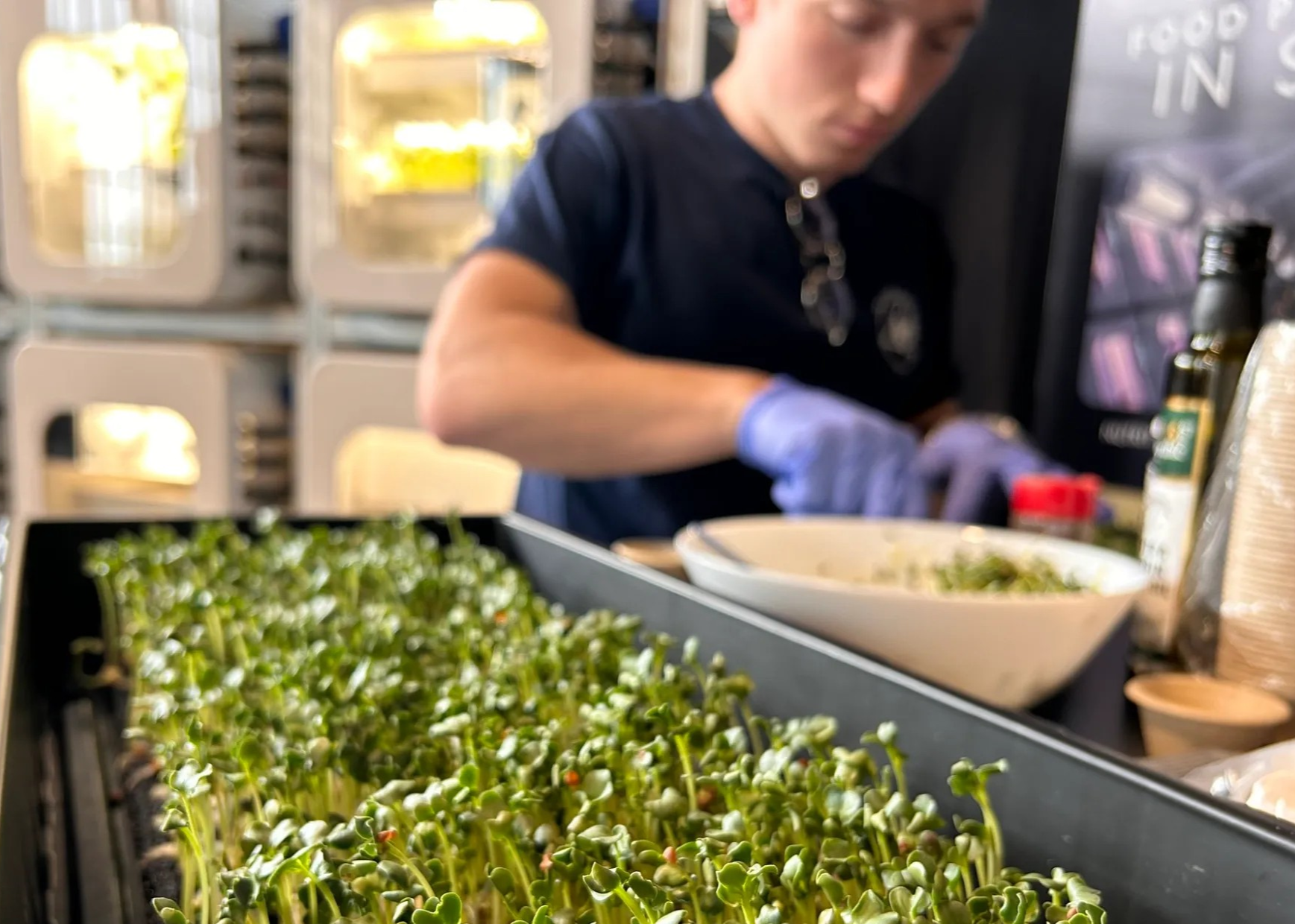GadgetWings
Fine dining travels
to space
Students and scientists aim to upgrades how astronauts eat as the future touches down in NASA’s Deep Space Food Challenge.
For one, no one can deliver takeout to the International Space Station. Likewise, because space food needs to be safe and nutritious, and last for at least five years, most of the fare onboard tends to be freeze-dried or packaged in disposable containers.
Efforts to improve current food production systems so astronauts might have both nutritious and delicious menu choices was the focus of NASA’s Deep Space Food Challenge, the third and final phase of which was co-hosted by The Ohio State University.
In 2019, NASA and the CSA (Canadian Space Agency) started the Deep Space Food Challenge, a multi-year international effort to develop sustainable food systems for long-duration habitation in space, including on the moon and Mars. Since Phase 1 of the challenge opened in 2021, more than 300 teams from 32 countries have developed innovative food system designs. On 16 August, NASA announced the final Phase 3 winners at Ohio State.
Presented at the Nationwide & Ohio Farm Bureau 4-H Center, the two-day event featured panel discussions with students, scientists and government representatives involved in developing sustainable food systems for long-duration human exploration, as the current system space agencies employ likely wouldn’t work well for extended planetary missions.
“Food is the limiting factor for human spaceflight,” said Tor Blomqvist, a food researcher at the German Aerospace Center,during a dialogue on fostering collaborative relationships between government entities and commercial space companies. “Before we can have a continuous human presence on the lunar surface, we need to figure out a way to increase food production in space, especially if we want to reduce our dependencies on Earth as much as possible.”

Space food systems are required to carry out a variety of onboard processes. This includes being able to store food in areas with limited space and ensuring safe food preparation, as well as establishing a method to eliminate all the waste the process of cooking creates. Eating in microgravity can be difficult while adhering to the balanced diet astronauts must meet, but because food can play a critical role in the crew’s psychological well-being, like affecting their mood and morale, the future of space exploration is as intimately tied to the type of food we pack on the trip as it is to advances in cutting-edge rocketry.
“We’re going to need a roadmap for the food systems we’re trying to achieve and this is something that national space agencies can’t do themselves,” said Blomqvist. The solution, he said, is to inspire cooperation between the private and public sectors.
Ohio State has already cemented its connection to the rising commercial space industry through the establishment of the George Washington Carver Science Park (GWCSP) in cooperation with Voyager Space Holdings.
Located at the north side of The Ohio State University Airport, the GWCSP will serve as an ecosystem to fortify commercial spaceflight research, technology, and economic development in low-Earth orbit. The park will also include terrestrial analogs of research and facilities aboard the upcoming commercial space station Starlab, said John Horack, Neil Armstrong Chair in aerospace policy at Ohio State and a key organiser of the event.
The ground-based research and development conducted there will help establish sustainable exploration beyond Earth by developing manufacturing technologies that inform space constructions, addressing novel ways to keep astronauts healthy and safe via closed-loop life support systems, and studying unique agricultural challenges.
“Carver’s work was about creating new knowledge and research that would impact the largest number of people in the most profound way possible, so that their lives could be improved,” said Horack. “This anchor site will strive to do the same.”
The conclusion of the Deep Space Food Challenge, which is also geared toward helping Earth’s food scarcity issues, also featured demonstrations from The Ohio State University Simunauts, a group of current and former students who worked alongside NASA to operate the novel technologies being presented. Of the four teams who competed to win a prize purse of $1-million, Interstellar Lab received $750,000, while the two semi-finalists Nolux and SATED received an award of $250,000 each.
“Congratulations to not only the winner of the Deep Space Food Challenge, but to all those companies whose products and technologies will help us not only to feed astronauts in deep space but use our research in space to feed people here on Earth,” said Horack.



















